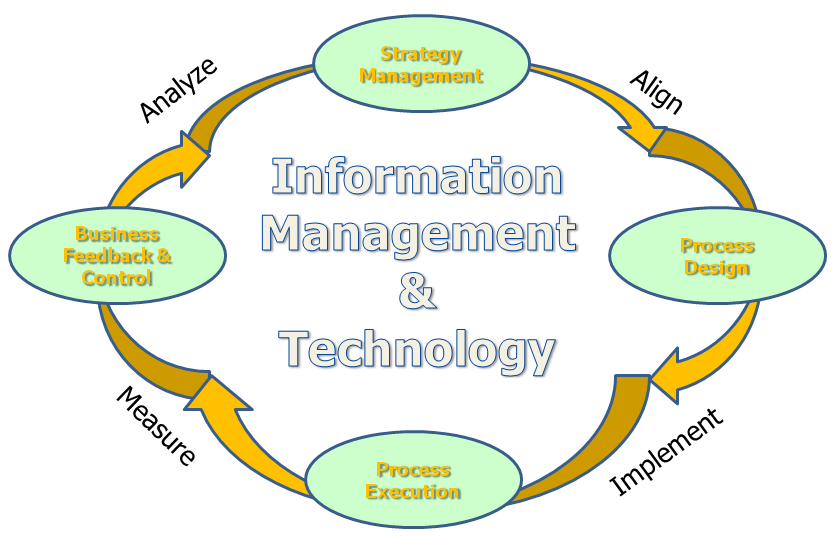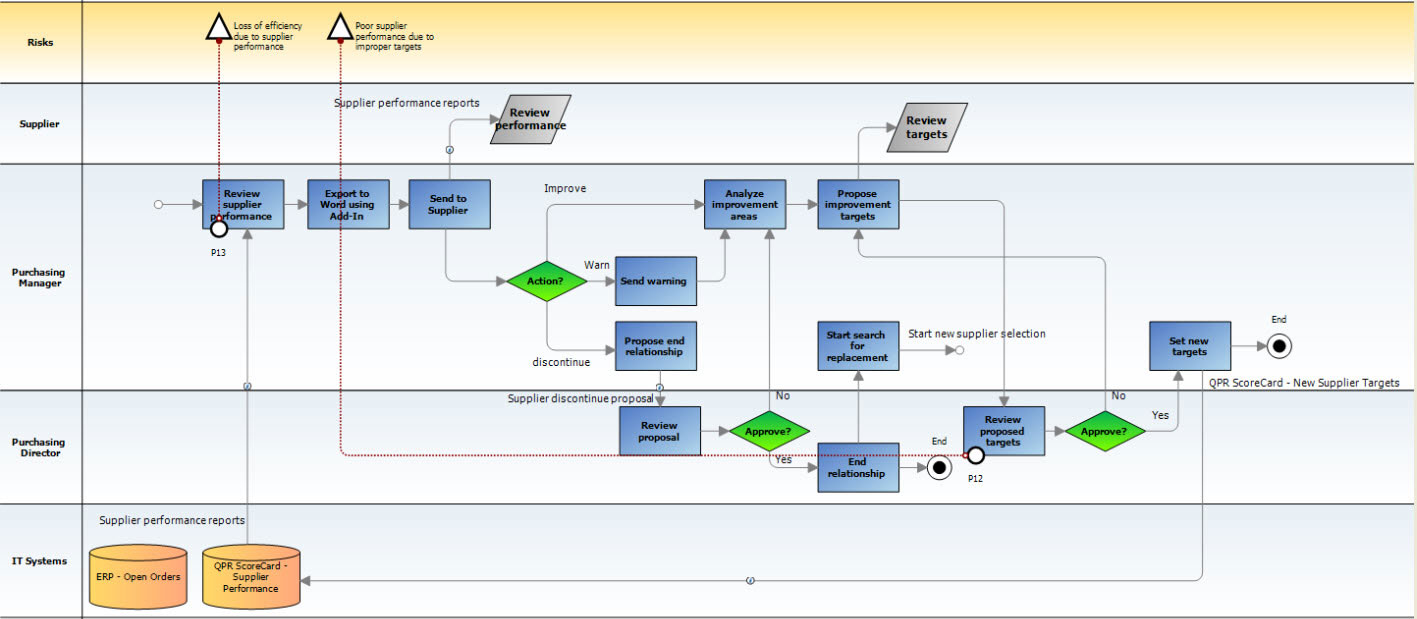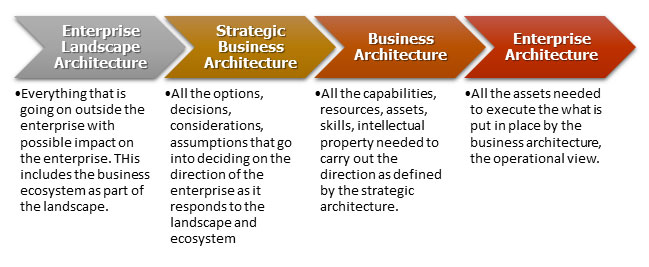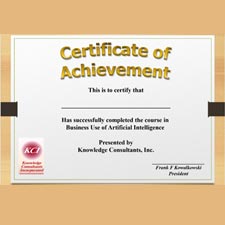Consulting Services (18)
Implement Enterprise Performance Goals
Focusing on Knowledge Transfer
Whether you’re interested in a public course offered with our partner, Innoverto, or want a private, custom workshop for your team, we have courses in a variety of areas. KCI provides a certification program to ensure your employees have retained their new knowledge and skills.
We’ve been providing training for over 15 years within the North American, Europe, Mid-East and Asia continents. To learn more about each of these areas, click the area of interest. At KCI, we value the transfer of knowledge.
The current global economic, political and technology forces are placing considerable stress on the ability of businesses to perform in concert with the rapid changes. As companies move forward the need for skilled professionals becomes more and more evident. Productivity and organization results depend on the skills and knowledge of the company staff. Whether the skills are specifically focused on one discipline such as process management or more general business analysis, Knowledge Consultants provides educational options to develop the organization with the know-how, skills and knowledge needed to meet its goals. How? KCI trains people to bridge the gap between the business perspective and the technology needed to enable the business to achieve the desired results.
KCI provides education in several subject areas, namely:
- Digital Transformation
- Business Analysis and Analytics
- Business Focused Artificial Intelligence & Machine Learning
- Process Performance, Management & Improvement
- Business Management Models, SWOT, 5-Forces, Strategic Alignment and others
KCI offers various educational services that cover the following areas. To learn more, click on the above areas listed.
The following schedule represents the training courses being held in the Mid-East and online remotely in 2022. KCI's focus is on multiple topical areas in business and information technology. Course brochures are available on request.
Training Seminars for 2024.
July 2024
| Data Analysis | Remote | 07/1/2024 |
Courses Offered through Innoverto. For Outlines and registrations contact Innoverto.
The following list represents current professional education courses available for in house education in person or for public courses and in-house international courses through one of our partners such as Innoverto in Dubai, IYCON in Canada or IBN International in Southeast Asia.
KCI's current focus is on the effective use of emerging analytics for business analysis, strategy, Innovation, project management and requirements analysis. Major focus is on the integration of current and emerging analytic capabilities reflecting areas of interest such as artificial intelligence, generative AI, ensemble analytics, decision productivity, management productivity. Industry focused versions are available as are custom workshops using client material. Short videos are posted on YouTube to introduce topics such as strategy management, data analysis and use of emerging AI/ML capabilities. More videos are added regularly. The resources tab on this site points to those videos. Added podcasts are also available on related topics focused on issues in management today.
KCI has a catalog of over 40 courses. The major course offered this year are:
- Effective Business Transformation with AI
- Essential Data Analysis
- Emerging AI and ML Capabilities
- Key Management Analytics
- Strategic Alignment Methods
KCI initiates management and professional remote learning:
Knowledge Consultants Inc. is offering its management and professional education courses using advanced remote learning with interactive instructor sessions. This is an alternative for mangers and professionals that want to increase their skills and truly learn about a particular topic. Learning involves active interaction with instructor led material, external material and hands on exercised for material retention. Courses are divided into two categories:
Relevant for today’s business environment KCI offers courses such as:
- The Business use of AI
- Digital Transformation
- 4th IR
- Data Analysis
- Process Automation
- Business Alignment
- SWOT Analysis with Analytics
- Risk Assessment
- Operational Consolidation
- Mergers and Acquisitions Analytics
- Innovation
- Digital Transformation
Enterprise Performance Management and Improvement
Written by Super UserThe goal of enterprise performance management is to improve the performance of the enterprise in a manner consistent with the strategic intent of the management. To do this the enterprise must address both the external and internal impacts through methods such as competitive intelligence and business intelligence. The external view is supported by disciplines such as the 5 forces and competitor cross impact analysis. The internal view is supported by performance disciplines such as balanced scorecard, value chain and other methods. KCI provides services in support of realization of the goal of performance management especially as relates to:
- Business intelligence
- Competitive Intelligence
- Balanced Scorecard
- Five forces assessment
In addition to providing services in this area, training courses are available to help transfer knowledge to key people in your organization to ensure they are ready to implement the changes and meet any new challenges.
Effectively managing organizational strategy & risk during a downturn
In today’s global market, there are areas that have downturns other have upturns. It is during these chaos periods that companies have realized that standard solutions will not solve issues that have risen out of the macro economic situation.
This is because there are two types of issues at hand, i.e. strategic issues, as well as operational issues. Most operational issues can be addressed with standard task-oriented management approaches, but organizations need to address strategic issues and to focus on the big picture to effectively managing organizational strategy & risk during these times, especially, in a downturn.
Elements, such as inflation, business cycles and risks should be evaluated to allow the management to take concrete steps to steer their business to success. In most cases, these steps will revolve around the following seven approaches:
- Focus on the core competencies of the business
- Remain close to your customers
- Timely & Reliable Management Information
- Identify and Manage risks
- Re-visit and refocus your strategy:
- Manage Costs
- Identify & retain talent
Let's discuss some of these seven approaches.
1. Focus on the core competencies of the business: This is easier said than done, as in most large organisations, the reporting system and information flow, does not easily allow the management to identify those areas of the business which are of the most value, and those which are marginal contributors. QPR ScoreCard allows management to clearly define the strategic drivers for the organisation and identify the underlying processes which drive these strategic objectives. QPR ProcessGuide allows organizations to clearly define core processes which drive the core value of the business. By linking performance indicators to these processes from QPR Scorecard, at all relevant levels, it becomes easy for the management to focus on those process areas which realize the most value and monitor these processes closely to ensure delivery of strategic goals and objectives.
2. Remain close to your customers:
Ensuring that customers remain satisfied, will ensure loyalty during hard times, especially in a downturn, as customers will be channeling funds into those partnerships which provide the most value. Ensuring that customers continually see the value provided by the organization will lock in future revenue streams. QPR ScoreCard allows the creation of strategic themes. As an example, the Customer Value proposition theme, extracts the Value proposition drivers from the strategy map, and co-relates this with outcome objectives to clearly show cause and effect impact of the organization's strategy. This allows the management to periodically diagnose their strategy execution, and ensure that key business drivers such as product image, customer satisfaction, etc. are closely monitored to ensure that the organization is close to its customers. QPR also provides seamless drilldown functionality to get to the root cause of non-performance. Drilldown can be by multi- dimensions, and can be viewed along with action plans put by mid-tier managers to improve performance of critical elements. QPR ProcessGuide allows clear and accurate documentation of all customer facing processes (and other organizational processes) to enable organizational members to effectively interact with customers in a manner which provides them the highest value, while also meeting organizational requirements.
3. Timely & Reliable Management Information:
It is at times like these, that it is crucial for a CEO to know what is happening on the ground. Ensuring a system which enables transparent internal communication on matters of operations and strategy will ensure that the management is well-informed and can take appropriate and timely decisions. The QPR portal provides a complete overview of operations and strategy execution ("What’s New" View). Sections displayed include performing indicators, non-performing indicators, actions being taken by the management team, as well action plans which are due, their deadline, and the responsible person for executing the same. To ensure that only reliable information is acted upon, QPR ScoreCard provides the option to visually mark information which has been validated and approved by the data steward. Other information is also displayed, but can be marked as non-validated. There are also certain critical elements which the management would like to track very closely. Under normal circumstances, the management is dependent on receiving updates on these key elements from middle & lower management, and often, when these elements perform poorly, there is reluctance and delay in providing these figures to the management. With QPR ScoreCard, the management can set up exception alerts for any measure, objective or initiative and choose to be alerted via email when performance goes bad. This puts the control back into the hands of the management. They can take immediate decisions and actions to correct performance. It is also possible to view a summary of all alerts on a single screen and get a reminder of the last date the alert was triggered.
4. Identify and Manage risks:
This is the time to document and address risks across the organization as well as external to the organization. Having a system to document,and control risks will ensure that timely preventive and corrective action can be initiated to mitigate risk in some cases, and eliminate risk in other cases. The following are the usual challenges associated with risk management in organizations:
- Risk and compliance are managed reactively
- Risk and compliance are managed in functional silos
- Lack of a systematic approach for the whole organization
- Multiple regulations are overlapping, causing duplicate work · Regulations and business operations change constantly · Risks are viewed as threats, not as opportunities · Reacting in an isolated way to each and every risk and regulation is inefficient and is becoming a huge cost driver · Management cannot obtain a clear view of risks, compliance and the status of internal control and this hampers decision making, leading to lack of solutions to the problem. The QPR Risk Management solution, which is created for each organization using QPR ScoreCard & QPR ProcessGuide, provides a comprehensive framework for risk identification, assessment, control & reporting as under:
Risk Identification
Step 1, Model Processes into the desired level of details. This is done using QPR ProcessGuide. QPR ProcessGuide provides an easy-to-use tool to quickly document and detail all processes. It allows the management to involve its entire organization and business partners with an easy-to-use environment, that provides an easy to understand modelling notation, and serves as the central hub for process documentation, related specifications, policies, agreements, document templates etc. QPR ProcessGuide provides all users with the powerful capabilities of a professional process modelling, analysis, and communication tool in an easy-to-use package you would expect from a process drawing tool. Step 2: Identify risks & controls in your processes Once the processes are detailed, it becomes easy to document risks against each process. It then becomes possible to also identify existing controls which are available to mitigate these risks.Risk Assessment & Reporting
Step 3: Perform risk assessment via QPR Portal Risks can be then assessed based on the probable impact and the probable likelihood on different variant of scales as desired by the organization. For example, the scale could be from 1 to 6, or using status options from high-to-low. Step 4: Risks ranked automatically, highest to lowest Once the risk assessment is made by the respective managers of the organizations, the risks will be automatically ranked by QPR, based on the severity of the risk and the likelihood of the occurrence of the risk. The management can then detail the control activities to be undertaken, using the action plan functionality of the QPR Portal. Step 5: Risk Dashboard Risk assessment & reporting is made easy on QPR ScoreCard, with highly configurable Risk Dashboards as shown alongside. This makes risks visible to the management and enables them to focus on exceptional risks very quickly and take control actions appropriately. Step 6: Remember relation to Strategic Objectives & KPI's It is critical to understand the impact which the identified high impact & probability risks have to the Strategic Objectives & KPI’s. QPR ScoreCard allows mapping these risks to the respective Strategic Objectives & KPI’s to give a further, much needed dimension to risk reporting, enabling the management to focus on those risks which impact critical Strategic Objectives & KPI’s. Step 7: Risk reporting, drill-down & consolidate It is also critical for management to be able to drill-down risks from the corporate level, through the hierarchy of departments in the same manner as drilling down financial and other reporting numbers. This allows the management to view corporate risks by dimensions such as line of business and then location, as an example. a: Risk view in more detail QPR ScoreCard allows the ability to drill down to each risk and view the historical progression of the risk profile, to enable the management to assess the effectiveness of risk mitigation activities. Step 8: Dashboard for critical risks QPR ScoreCard allows critical risks to be reported separately from general risks and supports creation of dashboards and drill-downs for these risks. a: Risk reporting, amount of critical risks Available statistical reports on the number of risks by risk categories further enhances the management’s ability to focus on critical risks within the defined risk categories. This can be graphically represented by numbers for easy identification. Step 9: Risk reporting, analyze critical risks in detail QPR ScoreCard allows extensive risk reporting and analysis at all levels. Ø Control Activities Step 10: Create control activities to identified risks Control activities can be added using the QPR Portal against risks identified, by the respective managers. Control activities and then monitored alongside the risks. Finally the management will be able to monitor these control activities through the QPR Portal with status of each control activity and deadlines against the same. 5. Revisit and redraw your strategy: Strategy which has been initiated with a completely different economic backdrop in mind quickly becomes inapplicable and even dangerous under adverse macro-economic situations. A previously applicable competitive advantage may need to be re-invented to ensure the organization remains competitive. QPR Scorecard allows the management to track strategic objectives within highly configurable strategy maps and define the strategic relationships between the objectives. The co-relation function clearly defines the cause and effect linkage and allows the management to diagnose their strategy while it is being deployed. Based on the co-relation generated based on the actual data, the management can take more informed decisions to effectively impact strategy deployment. Strategy can then be quickly refocused and re-deployed as required. 6. Manage Costs: Managing costs does not mean across the board cost reductions. Business structures and business processes need to be closely examined, to ensure the organisation can support customers in the most cost effective way. Non-value adding processes need to be rationalized, and resources freed up from these processes can be redeployed usefully elsewhere. QPR ScoreCard can be used to build a robust budgeting system to ensure that costs are received from bottom-up, and once collated by the system, the management can validate the proposed costs to ensure that only value adding costs are approved. Moreover, on an ongoing basis though-out the year, QPR ScoreCard can be used by the management to track actual costs against budgeted costs, and ensure that costs are closely controlled at all time. 7. Identify & Retain talent: A critical step in survival is to identify talent across the business which cannot be lost. Having a robust & transparent performance management system in place will greatly support quick identification of critical talent, and allow the management to reward them suitably to ensure their retention. QPR ScoreCard supports this objective by supporting creation of personal scorecards which can reflect not only KPI’s, but also competencies to present a complete view of the individual’s performance. Moreover, QPR ScoreCard allows the management to quickly structure and deploy a transparent performance management system by allowing cascade of scorecards, KPI’s, and strategy from the corporate level, through department levels right down to personal scorecards. And finally, personal scorecards can also link the total individual performance directly to compensation and make this available transparently to the managers and the individual. Conclusion Responding to activities in today’s global market requires dynamic, proactive, responding management to business conditions. Especially in a downturn of economic times, management needs to closely monitor strategy, performance, costs, and risks. Using QPR ScoreCard & QPR ProcessGuide effectively equips the organization with a single window solution to effectively plan, monitor and improve its performance.
Using an Integrated Management System (IMS) to Drive Business Success
Businesses traditionally evolve over a period of time, and introduce different back end, or transaction processing systems at different stages of its evolution, depending on its needs. So they may have a suite of, for e.g. ERP, CRM, Core Banking, and other applications critical to running its day to day transactions. On top of these applications, organizations usually evolve into the use of BI or Corporate Performance Applications. Inevitably this has lead to duplication of effort in maintaining the same information in multiple systems, unnecessary cost, a lack of information transparency and inability to timely provide managers with quality information to base their decisions on. Ensuring success in achieving organizational goals on a sustainable basis, requires firm control over managing your strategy and operations. It is critical to create a single integrated system, to report from these multiple applications and provide the management unified information on which to base critical decisions. These decisions will need input from one or more of the following management frameworks running within the organization.
What is an Integrated Management System?
* Strategy Management System - describes the mid-to-long term plan of action of the organization
* Business Process Management - describes the actions being executed and documents how the organization does things
* Business Performance Management - monitors how well the organization is doing things.
* Quality Management - ensures the organization delivers value to its customers.
* Risk & Compliance Management - ensures that the organization has identified possible risks, and is prepared for them. Deploying an IMS allows organizations to migrate towards a management system that treats strategy, performance, risk, compliance, process, and quality as interdependent enablers of achieving organizational goals, allowing them to be managed in a unified, systematic way to optimize results.
Key benefits that accrue from running an IMS are as follows:
* Integrate all components of managing your organization into one coherent system, executed cross-functionally and in a systematic way
* Align all management practices with your strategy
* Improve processes from a holistic viewpoint that includes besides performance also risk, compliance and quality mandates
* Improve decision making by providing managers with shorter reporting cycles and a single point of access to all information, structured in a systematic and uniform way
* Reduce the cost of audits and compliance by providing a uniform approach to manage compliance with a multitude of regulations and standards, rather than managing each regulation in an isolated way
* Involve your employees in the collaborative execution of strategy, performance, risk, quality and compliance management.
Reporting Phase
1. Creating "Responsibility Matrices" is also very simple on the process maps. Within a QPR process map, the responsible designation ("doer") is defined by the organizational unit band which moves horizontally across the processes. For each sub-process and main process (and activity if relevant), QPR allows us to select the designation of the process owner or accountable person for the process. This is graphically defined by the designation of the process owner on the process box itself. The RACI can also be graphically generated in the classical grid format as shown under using custom attributes available in QPR:
2. It is also possible to add Job Descriptions and Competencies for each position on the Organization Hierarchy. Within QPR, custom attribute fields are created within the process model. The required custom attribute field can then be assigned to the organizational units and filled up as required. Having the job description linked to be organizational unit allows easy verification of whether the tasks being performed by the position described is adequately reflected in the job description in terms of dimensions accountabilities and skill sets. In the screenshot below, we can see that on the left side we have the organizational chart with the reporting hierarchy, and for the selected job position on the right side we have the different fields of the job description.
3. Generating risk / control hierarchies. Once the process repositories are built, it is easy to generate custom reports using QPR such as the risk / control hierarchies shown below, as well as links to risk measurements and control tests. E.g. Risk / Control Hierarchies and monitoring
Benefits of using QPR as a tool in Process Consulting
Multiple benefits accrue from using QPR as a tool in Process Consulting.
* Creation of a Process Repository with best practice processes by industry
* Creation of base process templates for new assignments
* Transparency and accountability during the process implementation due to logging and online publishing
* Delivery of process documents on Microsoft Word (auto created from QPR ProcessGuide)
* Optional delivery of the QPR ProcessGuide Model itself, to enable the customer to carry forward the process initiative
* Create comprehensive business process models showing high level and details illustrating the most current status of your operations
* Standardize work practices by designing uniform guidelines e.g. for quality systems
* Re-engineer and improve the business processes to ensure optimized flow of materials, resources and information
* Quickly review resource (human or system) utilization per organization and find the detailed information about a resource or activity
* Simulate processes to identify potential bottlenecks, optimize resource utilization and validate improvements
* Analyze processes, illustrate and benchmark results with the highly visual and easy-to-understand graphs and reports of QPR ProcessGuide
Conclusion
The traditional methods of consulting are being quickly replaced by tool based consulting which will enable consulting firms to deliver better results in a shorter time, which translates to more project profitability for the consulting firms, and better resource utilization for in-house process consulting teams. QPR products are leading the way in providing these benefits. For additional information on QPR Tools, please browse to www.eai.com To send a comment or contact the author, please email This email address is being protected from spambots. You need JavaScript enabled to view it.
Concrete Benefits in Using QPR during Process Consulting Assignments
With the use of QPR during Process Consulting Assignments, the entire focus shifts to delivering the process models and recommending benefits, and removes the overhead of managing the process repository and associated attributes of the process such as job descriptions and responsibility matrices.
The following is an example of deploying a process consulting assignment using QPR and associated benefits.
Setup Phase
- The first step will involve creating a template on QPR ProcessGuide which contains the relevant process framework for the assignment. This will consist of the following:
- Existing Organizational Hierarchy (these will be displayed as swim lanes on the process map)
- Process Hierarchy
- Standard Modeling Notation to be used in the assignment
 |
Benefits:
- This template may be used for other similar consulting assignments as QPR ProcessGuide allows new models to be used based on existing templates/models.
-
QPR ProcessGuide security options, ensures that Team Members will work within this process framework and this will lead to a uniform delivery. For e.g., as the hierarchy is already defined, Team Members will find the reporting structure easily available. There will not be inaccuracies due to misspellings or abbreviations (e.g. Mktg. Manager instead of Marketing Manager).
- Enforcing a standard modeling notation ensures that even new team members will be able to quickly understand the modeling framework.
- This template is then used as a base model to which all process model models to be built are linked as child models.
-
- Setting user rights for process modeling - QPR ProcessGuide can be used to plan a rapid deployment. Using the advanced user rights, different team members can be:
-
- Assigned the rights to modify or view different main processes and sub process structures.
- Sensitive processes can be protected with rights being assigned to selected team members and other members having no access.
Benefits:-
-
- Sensitive information is protected through user rights, although with appropriate permissions, this can be viewed along with the entire model.
- Team members can work on their allotted sections, and if provided view access to others work, will be able to get a “big picture” view of the processes very quickly. This will lead to better documentation of the processes and process alignment.
- Executing the assignment - At the team level the following would be the steps taken on QPR ProcessGuide to complete the assignment.
-

Execution is usually very quick as the time is spent on creating process structures and QPR ProcessGuide generates other associated information which would otherwise need to be created.
a) The Process diagrams are first created by placing the responsible “organisation elements” onto the process map.
b) Sub Processes and activities are then arranged based on inputs from the Process Owner.
c) Existing documentation and procedures can be attached to the process maps creating a front end repository.
d) Processes can be version controlled based on revisions and discussions with the customer.

e) Full audit trail logging at the process model level and the individual sub process level enable accountability for changes made to the process model.

f) Process Models can be “checked out” for use offline from the server, enabling full process modelling capabilities while at the customer’s site. Once the team members are back in office, the process model will be “checked in” to the server and changes made will be replicated.
g) Team leaders and Project Managers get to view the latest available process model on the server with all associated linked documents and other details.
h) Model versions can be created to manage changes and archiving easily.

i) Attaching document templates. It is relevant to attach all document templates to a process step, or even add policy documents to main or sub processes. This is done using the Information Items functionality, which ensures that the process repository is enriched with the correct and latest versions of the documents, which may be linked from existing document repositories such as Microsoft Sharepoint. These can then be listed as a hierarchy.

j) Identifying and documenting risks. It is also possible to layer different attributes on the process map, such as risks and control points to make the process maps multi-dimensional as shown below.

Enabling Process Consulting Assignments - Part 1
Introduction
A large number of organizations use consultants or large internal process teams, to deliver Business Process Definition projects
in order to gain documented benefits from such initiatives.
In reality, while benefits will accrue to the end customer from such initiatives, the very absence of an enabled process to deliver
these assignments will impact the effectiveness of the delivery.
Consulting companies and organizations are increasingly implementing Process Tools, such as QPR's ProcessGuide, to more effectively
deliver on such projects, as well as to enable the end customers to seamlessly continue to reap benefits of these initiatives on an on-going basis.
Here are some of the challenges in delivering Process Consulting Assignments. The traditional Process Consulting Assignment usually consists of the following steps:
- A consultant facilitator leads the discussion and review with management and staff providing information about current practices.
- Another consultant takes notes of what is said and what is decided.
- The consultants return to their offices and convert their notes into documents using separate text and diagramming tools: usually Microsoft Word and Visio.
- Some days later the draft documents are submitted for review by the meeting attendees, who by this time will have other priorities on their mind.
- They may wait several days before reviewing the document and when they do they have difficulty recalling what was said.
- Changes to the draft document are suggested by attendees. Another meeting may be held to resolve disputes between individual views but trying to get the original attendees together is difficult and by the time they have reconvened recollection of their original discussions is poor.
- Error and compromise introduced through the extended process are repeated in all functional areas of the organization being reviewed.
- Every time changes are introduced the consultants need to ensure that they correctly modify both the text and the associated diagrams - not only in terms of synchronizing the wording and flow but also ensuring the integrity of the process. For example, if entry of a resource is removed from an order taking process (e.g. selecting the Sales Rep) associated references to the resource should also be removed (such as a subsequent debt collection activity for the Rep.)
- The delivery of the consulting assignment is usually documents in Microsoft Word or Visio.
- With the constant pressure to change processes and improve efficiency, a company needs a regular process review program, at least quarterly, rather than waiting till inefficiencies are impacting the bottom line. However, review and maintenance of the Microsft Word and Vision documents makes the process review exercise so problematic that they are undertaken rarely, if ever.
Continue to Page 2 (Enabling Process Consulting Assignments - Part 2)
More...
Automation: A Key Driver for the Success of a Strategic Management System
Many executives are finding it difficult to improve the performance of their companies in today's competitive environment and realizing that the problems they face are structural, not just cyclical. Traditionally, their response in tough times has been to put pressure on short-term operating performance to boost earnings, but this approach is no longer adequate. A new organizational strategy is required to develop growth initiatives even as companies pursue operating savings.
Strategy is playing an even more important role in the new economy - but in a transformed way compared to as it used to be in the industrial era, where strategy work was more isolated from operations. In the old days, it was much clearer how an asset creates value, e.g. how funds received were deployed in standard products to customers at fairly stable margins. Today it is harder, to establish that link when it comes to intangible assets, for example linking the knowledge of an employee, and a financial outcome. Strategy has to become an integral part of the management system of an enterprise. Strategy work can’t be delegated just to the CEO, his executive colleagues and to the strategic planning department that is serving as a staff department to the CEO. Everyone in an organization who makes decisions has to be linked to strategy and into a strategic feedback loop that feeds back important information as fast as possible about what is working and what is not working, to those who have to make or change major strategic decisions. For the management system of the enterprise, that means that strategy has to be linked and integrated with the operational management. Tying strategic planning to performance monitoring and decision support at a tactical level creates a very powerful approach. However, running such a sophisticated system manually or using excel sheets creates an unmanageable overhead on the management.
Lack of automation is one of the main reasons why deployments of strategic management systems fail. A study by the Gartner Group in 2001, led them to conclude that Enterprises that choose to ignore IT during the design and implementation of the Balanced Scorecard (BSC), will fail to embed the BSC in the organization.
Automating the strategy management system should also not create any overhead on the managers. The automated system should be simple, so that strategy management becomes a part of every day actions of the managers.
In order to address the need to automate strategic management systems, traditional Corporate Performance Management Systems have evolved into a new breed of Collaborative Management Systems such as those provided by QPR Software (www.qpr.com) which allows companies to communicate and define their corporate strategy and objectives on an entirely new level.
Planning, implementation, communication and commitment are the corner stones of collaborative management. This enables personnel at all levels of an organization to identify their individual responsibilities and targets so that strategy becomes understandable in an everyday operational sense.
The advantages of an automated Strategy Management System are as under:
- Facilitates and creates a framework for the Strategic Management implementation
- Provides Scalability of the Strategy Management System (think big, start smart)
- Top-down approach (need-based or strategy-focused solution instead of IT platform building)
- Visualizes and helps understand the strategy
- Agility (easy-to-adapt solution according to changes in the organization/environment)
- Saves time and money in data gathering and report generation
- Enables and systemizes feedback and interaction
- Provides tools for analysis and enables drill down to the real causes
- Provides one easily accessible interface to all strategy and performance related information
Across the world, progressive organizations such as the Commercial Bank of Dubai (Dubai,UAE), Gulf Agency Company (Dubai,UAE)and the Mustafa Sultan Group of Companies (Muscat, Oman) are leading the way in automation of Strategic Management Systems. As a case study we can look at the experience of the Commercial Bank of Dubai. Their Strategic Management System based on the Balanced Scorecard Methodology was manually deployed for four years, prior to automating this in August 2004. Benefits achieved though automation include greater visibility of strategic information, drill down capabilities to arrive at root causes of performance variations and transparency of objectives across levels of reporting.
Author: Jude Chagas Pereira - The Director of IYCON FZ LLC, a Consultancy and Technology Solutions Company, with a focus on providing High Quality Business and Technology Solutions to organisations across EMEA, Oceania and the Asian Subcontinent.
The Future of Business Process Management is NOW!
Business Process Management (BPM) is a management discipline that encourages looking at your whole business from the perspective of your customers and business partners. It measures your operational performance from an external perspective to see how competitive or attractive your business is from their point of view.

Competition in virtually every market and industry is increasing because customers are more capable of comparing offerings and switching suppliers than they were ten years ago. You may find proof of this in your personal or your organization’s purchasing activities. But, this is not new.
So what is "new" about BPM?
BPM encourages a continuous improvement of competitiveness-defining processes, where the business-side, not the IT-side, takes the leading role in process improvement, supported by BPM-supporting technology. Dramatic improvements in information management and its underlying technologies that allow information about the business’ performance to be automated is new! This allows your employees and the management team to see how the business is actually performing and meeting its objectives. BPM is achieved by implementing the following methodology:
- Strategy & Performance Management – clear objectives, goals, and measures.
- Process Discovery – identify current process activities, participants, documents, and decisions.
- Process Design and Development - end-to-end simulation and analysis of process to assess impact for new design.
- Process implementation, communication and administration – communication to all with the use of BPM tools to automate process activities.
- Process monitoring – accurate reporting of process based information (cycle times, idle times, workload, exceptions, and delays) to assess performance levels and bottlenecks.
- Business performance monitoring – actual data being compared to strategic or tactical targets provides visibility into changes to improve overall business performance.
For example, let's see a high-level Supply Chain process diagram. Each process may have specific performance measures that are maintained and displayed in a scorecard which shows how this process performs. 
Together, the collection of information about this process provides a clear understanding of the process bottlenecks, cycle time, resource consumption, and its overall performance for everyone to see.
Today's competitive market demands a realistic assessment of your whole business from the perspective of your customers and business partners. As Rummler and Brache wrote in Improving Performance: How to Manage the White Space in the Organization Chart, “An organization is only as good as its process.” BPM provides a methodology to improve your business performance.
Contact EAI for additional information on how about BPM can help your business.
 Processes are critical to business transformation and execution today. Accurately representing a process is critical to realizing the expectations of management when processes are implemented. Before you can accurately represent the process you need to address and analyze performance and improvement issues.
Processes are critical to business transformation and execution today. Accurately representing a process is critical to realizing the expectations of management when processes are implemented. Before you can accurately represent the process you need to address and analyze performance and improvement issues.
Studies have shown that 75% of process projects fail in some way. So, why can’t companies achieve the improvement they read about in articles and see in presentations? What is it that BPM professionals know about improvement that companies are missing? The underlying reason for the company shortfall is that people don’t know what techniques, methods and tools are available and how to apply them in their situations.
Process management skills are required to support three core areas of business change today: digital transformation, integration or consolidation. They also form the foundation for enterprise growth through acquisitions, adding new products, e-commerce opportunities, e-government and enterprise excellence. Let KCI’s professional services and education courses bring you up to speed with what you need to know to be effective in your next successful process improvement project.
Successfully Responding to Change
Business and Enterprise architecture are the hot topics today. Enterprise architecture dealing with the IT infrastructure and its relationship to the business and Business architecture dealing with the structure of the business and its alignment with the digitization of the business including IT. However, the architecture framework encompasses a broader scope starting with the business environment defined by the business landscape and ecosystem to the detailed execution of the business to respond to that environment. A more complete picture of the architecture and their relationships is shown below:
Organizations are faced with high-demand response to changing business conditions in their environment. The interoperability of organizational components depends on how well the business architecture is known, documented and analysed with various types of business analytics. In the past, this depended on the corporate knowledge in people’s heads. The economic situation today has pressured organizations to merge operations, consolidate, divest and re-arrange their basic components. Loss of staff also means loss of knowledge of how the organization works. Assessing impact of changes depends on the preparation of models used to describe the organization and the analytics available to conduct an assessment of changes.
Enterprise (IT) architecture is perhaps the most common architecture developed today. The reasons for this are simple. Many of the architecture techniques have been developed by IT to cope with the explosive growth of the use of digital technology, the large cost of digitization, the complicated structure of enterprises and the rapidly changing structures that are needed to respond to market changes and economic impacts.
The business and IT architectures must be linked and understood to manage business change and address the demands of contemporary business. Businesses today are required to develop their architecture skills and capabilities to successfully respond to the changes in their environments.
- Architecture Resources
- Architecture Professional Education






